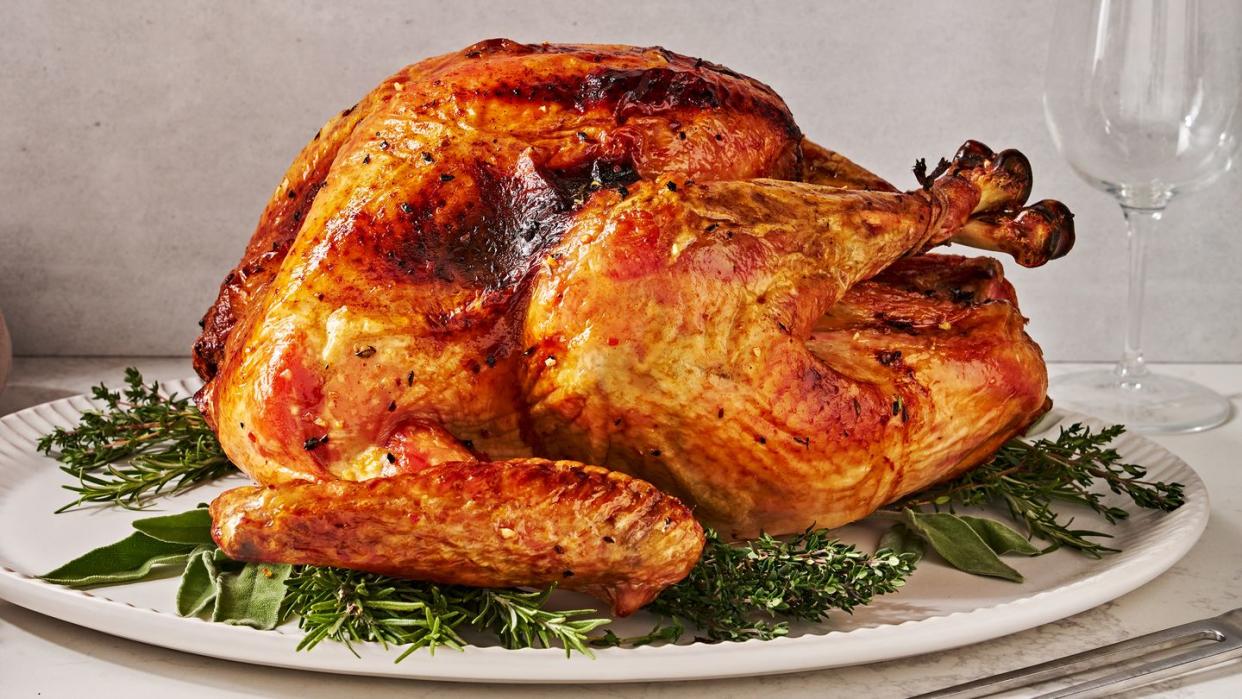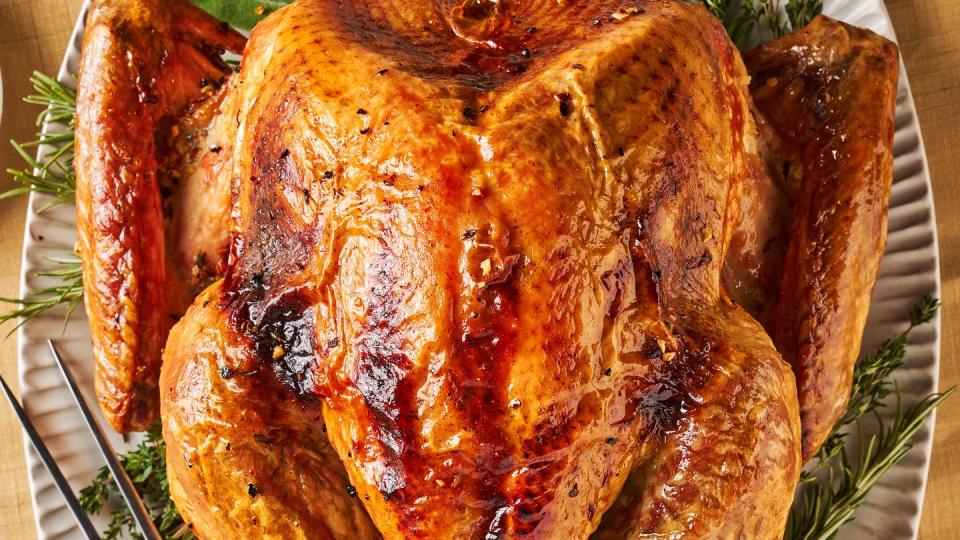These Are The Only Ways You Should Be Seasoning Your Turkey

Turkey is the centerpiece of Thanksgiving dinner, but let’s be honest: it’s usually the most disappointing. You go through all of this effort to determine how much turkey you should be making in the first place, you have to clear out the whole oven just to fit the bird inside, and then you spend hours roasting, basting, and painstakingly checking the temperature.
And, after all of that effort, you’re usually left with a turkey that’s dry and bland. Most of the time you need to drown it in gravy or chase it with bites of more flavorful sides. It can seriously dampen your Thanksgiving dinner—but it doesn’t have to be this way.
You can make a restaurant-quality turkey that’s both moist and flavorful just by properly seasoning it. And unlike ingredients like vegetables or cuts of meat, a whole bird requires more intensive techniques. Simply sprinkling salt on the surface isn’t going to cut it.
Instead, the most effective method of seasoning a turkey is a term that gets thrown around during the holidays—brining. It infuses food with salt, but in a way that penetrates all of the flesh instead of just seasoning the surface. The turkey naturally draws in the salt as it sits in the brine and diffuses the sodium evenly throughout the meat. And with that, it also boosts water retention and tenderizes the proteins.
It takes some planning ahead, but it’s well worth it. You should roughly aim for an hour of brining per pound of meat. Brining is by far the best strategy for keeping your meat moist, tender, and flavorful. So while you can supplement a brined turkey with a drizzle of gravy, you don’t necessarily have to.
We’re breaking down the two primary brining techniques that you can use this Thanksgiving to make your turkey the star of your holiday meal.
Wet Brine

Wet brining is fairly self explanatory: you soak your turkey in a salt-and-water solution. Through the process of osmosis, the salt water enters the turkey and the unseasoned meat absorbs that water—salt and all. So when the time comes to throw your turkey in the oven, it’s starting and ending the cooking process with more liquid than an unbrined turkey would.
You can also use the brine as a vessel for other flavors. While the salt does do most of the heavy lifting, you can also supplement it with other seasonings. It’s common to include sugar and aromatics like onions and garlic. But you can also add citrus, herbs, and spices.
And you don’t need to stop at just water, either. Chef and cookbook author Samin Nosrat swears by using buttermilk in place of water to brine poultry. Beyond adding more flavor than plain water, the lactic acid has even more tenderizing power and the natural sugars can boost the browning of the skin. But you can also use other flavorful liquids like apple cider or even pickle juice!
If you’re looking for a basic yet effective brine recipe, check out our version here.
Dry Brine

Since there’s no water involved here, a dry brine technically isn’t brining. But the way it works is very similar. Just like with a wet brine, the salt moves through the bird. But instead of being suspended in plain water, the salt works with the turkey’s natural liquid. This means that you’re not introducing any extra moisture to the bird—but the retained moisture has a much more concentrated poultry flavor.
It’s also much simpler to work with. Instead of creating your own salt solution and hauling a turkey-sized aquarium around your kitchen, you just rub your dry brine over the surface of the bird and let science do the rest. Want to make a dry brined turkey this Thanksgiving? Check out our foolproof recipe here.
How are you seasoning your bird this year? Let us know in the comments.
You Might Also Like


